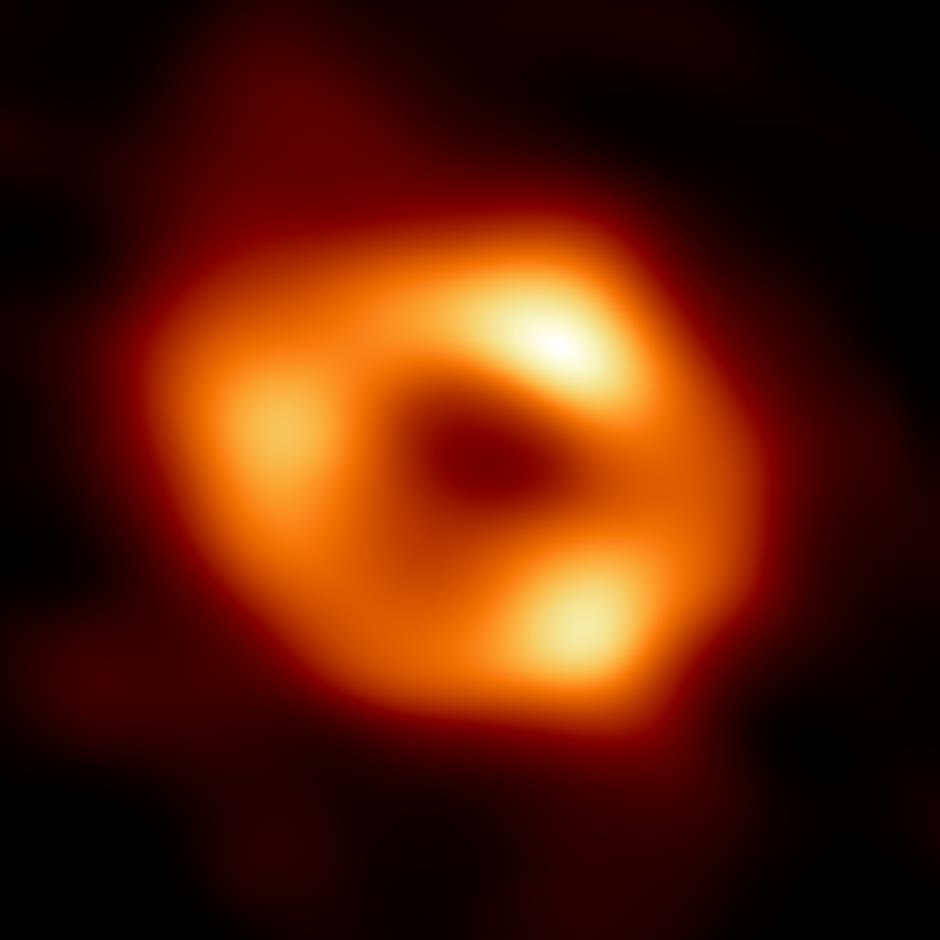This is the first image of Milky Way's black hole

Sagittarius A* (Sgr A*)
The first image of the supermassive black hole at the center of our Milky Way galaxy has been revealed by astronomers.
Sagittarius A* (Sgr A*), a black hole with a mass of 4 million suns, is approximately 27,000 light-years from Earth. It seems approximately the same size in the sky as a doughnut on the Moon.
The image was released by the Event Horizon Telescope (EHT), a global network of eight radio telescopes, on Thursday night, supporting Albert Einstein's general theory of relativity.
Three years have passed since EHT released the first image of M87*, the black hole at the center of Messier 87, a massive galaxy in the nearby Virgo galaxy cluster. Remarkably, the two black holes resemble one another, even though Sgr A* is 1,500 times smaller and less massive.
"We were stunned by how well the size of the ring with predictions from Einstein's General Theory of Relativity," said Geoffrey Bower, EHT Project Scientist.
"These unprecedented observations have greatly improved our understanding of what happens at the very center of our galaxy, and offer new insights on how these giant black holes interact with their surroundings," he added.

Comparison between Sgr A* and M87*
Though Sgr A* is significantly closer to us, it took another three years for astronomers to capture its image.
Compared with Sgr A*, M87* is a steadier target. Where gas takes days to weeks to orbit the larger M87*, in the much smaller Sgr A* it completes an orbit in a few minutes.
"This means the brightness and pattern of the gas around Sgr A* was changing rapidly as the EHT Collaboration was observing it – a bit like trying to take a clear picture of a puppy quickly chasing its tail," explained EHT scientist Chi-kwan Chan.
Next, EHT will analyze the contrasts between these two supermassive black holes to gather critical new clues about how this important process works, as well as test how gravity acts in these extreme situations more than ever before.
Besides, it is also planned to "film" these two black holes to gain more precise photographs, according to Shen Zhiqiang, head of the Shanghai observatory and EHT's coordinator in China.
He said China is preparing to establish its own submillimeter VLBI, an advanced astronomical interferometry used in radio astronomy, intending to join the global initiative of 24-hour constant observation of Sgr A*.















